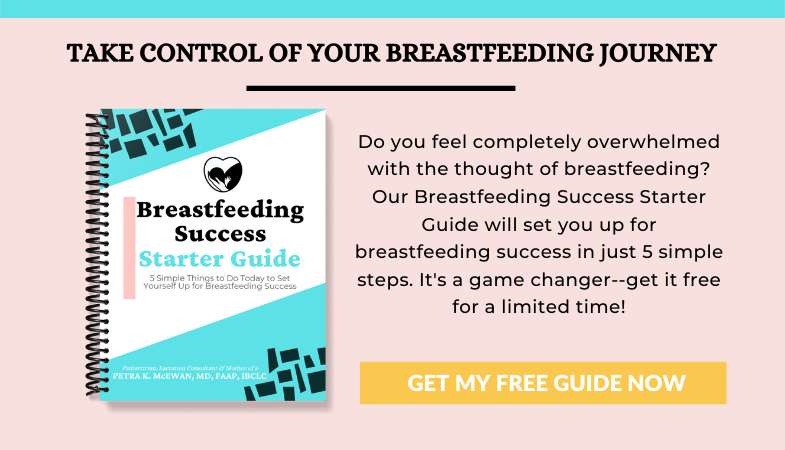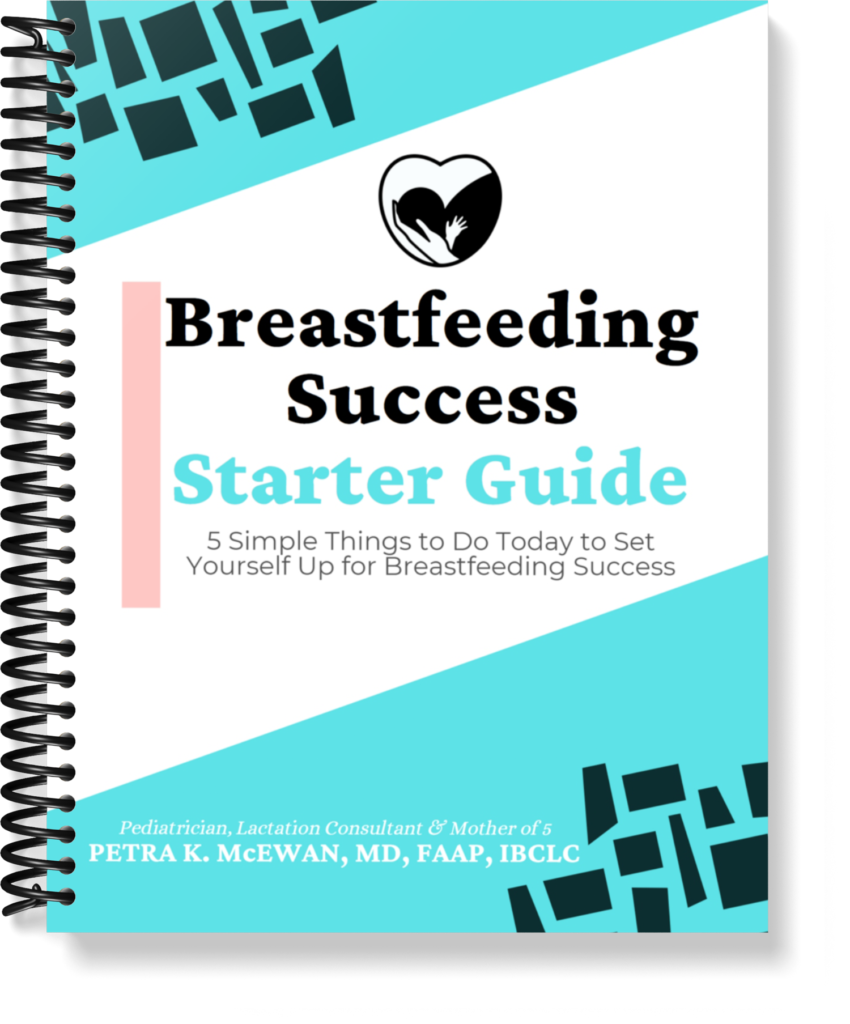Do you have a breastfeeding baby who is having trouble latching at the breast? Keep reading for instructions on the getting your baby to latch.
Your baby’s latch is everything! There are many important pieces that must fit together for breastfeeding to be successful. But one of the most essential things to establish early on is a good latch of your baby’s mouth to your breast. It is something that seems so simple. It doesn’t require any expensive equipment or an advanced degree. Yet, it can be daunting and frustrating when your baby struggles to latch.
Why is a good latch important?
- Your baby will be able to effectively move milk from your breast to his mouth (and tummy!)
- Your baby will get the nutrition he needs to gain weight and grow properly
- You will make more milk when your breasts are emptied properly
- Breastfeeding will be comfortable for you and essentially pain-free
- Feedings will be quicker and more efficient
- Your baby will not have to work as hard to get the milk he needs
- Your baby will be content, satisfied, and not struggle at the breast
To get started on the path to breastfeeding success, follow these instructions:
Getting your baby to latch:
- Tuck your baby close to you in whichever breastfeeding position is comfortable
- Use a pillow to support your arm, and your arm to support your baby
- With one of your hands, hold your baby’s head behind the ears, extending your baby’s head slightly
- Use your other hand to “sandwich” or squeeze your breast so that it is parallel to your baby’s mouth, making sure that your fingers are behind the areola of the breast
- Aim your nipple between your baby’s nose upper lip
- Offer the breast and wait for your baby to open his mouth wide
- Bring your baby to the breast quickly, with his chin leading first
Check your baby’s latch:
- Your baby’s lips should be open at least to a 140-degree angle, and should be splayed, or turned out
- The lower lip should be on the lower edge of the areola
- Your nipple and a good portion of the areola should be inside your baby’s mouth
- There should be more of the lower portion of the areola in your baby’s mouth than the upper portion (an asymmetrical latch)
- Your baby’s chin should be touching your breast throughout the feeding if the latch is deep enough

During the feeding:
- Your baby should have wide jaw movements
- You should feel vigorous, consistent sucking/pulling throughout the feeding
- You should feel a milk let-down within the first few minutes of the feeding
- Once your milk let-down happens, you should hear your baby swallow regularly.
- Your baby should stay latched throughout the feeding, and shouldn’t slip off the breast unintentionally
- You shouldn’t feel pain throughout the feeding. Initial pain while latching on is possible, but it should go away and you should be relatively comfortable for most of the feeding.

After the feeding:
- Your breasts should be softer than they were before the feeding.
- You may see milk in your baby’s mouth
- There may be leakage from the other breast
- Your nipple should not be creased or in the shape of a wedge
Getting your baby to latch is one of the very first steps of breastfeeding. If your baby has a good latch, it can make all the difference. I hope these steps have helped you with getting your baby to latch and stay latched.
Other helpful resources related to getting your baby to latch:






